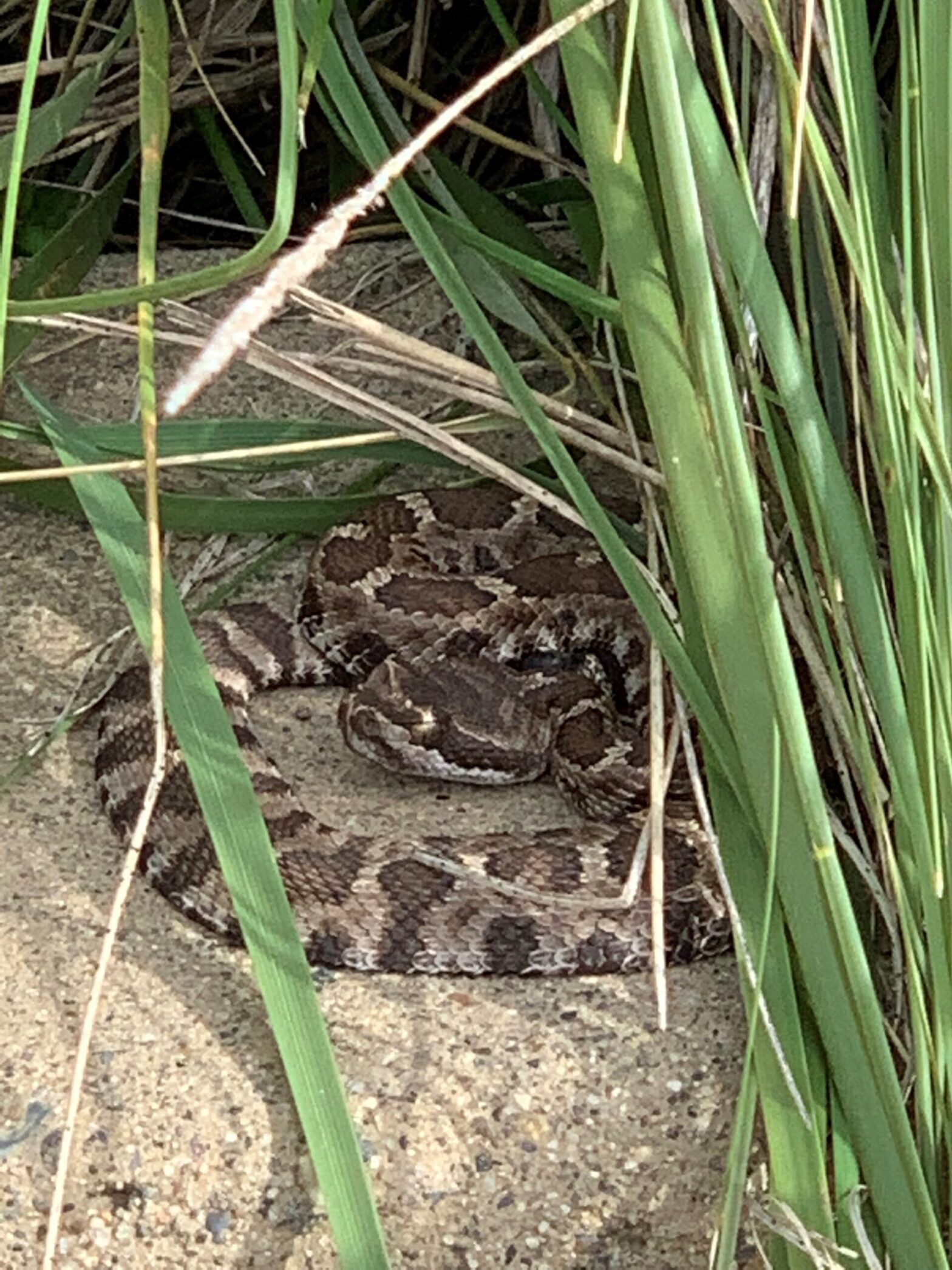Rattlesnakes are found on the American River Parkway. As the weather heats up, they will become more active, including at night when they may be hard to see.
Fortunately, rattlesnake bites are rare and mostly occur during improper handling of a snake or when they’re brushed against by someone walking or climbing.
Here are some tips from the California Department of Fish and Wildlife on how you can avoid a rattlesnake bite:
- Stay alert when outdoors.
- Wear sturdy boots and loose-fitting long pants. DO NOT wear sandals or flip-flops in brushy areas.
- Stay on well-used trails. Avoid tall grass, weeds, and heavy underbrush.
- Check rocks, stumps or logs before sitting down.
- Shake out sleeping bag and tent before use.
- Let others know where you are going, when you plan to return, and carry a cell phone. Hike with a companion when possible.
- DO NOT grab “sticks” in water. Rattlesnakes can swim.
- DO NOT let dogs off leash. Dogs are at increased risk when sniffing the ground near brushy areas.
- DO NOT try to touch or handle a snake, dead or alive. Dead rattlers may still inject venom shortly after death.
- Give live rattlesnakes enough space. They will usually escape before striking.
In the event of a rattlesnake bite, here is what you should do:
- Stay calm – but act quickly!
- Remove items which may constrict swelling (e.g., watches, rings, shoes).
- Transport victim to the nearest medical facility.
- Do NOT apply a tourniquet.
- Do NOT pack the bite area in ice.
- Do NOT cut the wound with a knife or razor.
- Do NOT use your mouth to suck out the venom.
- If a pet is bitten – Speak to your veterinarian about canine rattlesnake vaccine options.
Learn more about rattlesnakes, the importance of their conservation and how they behave at California Department of Fish and Wildlife website.

